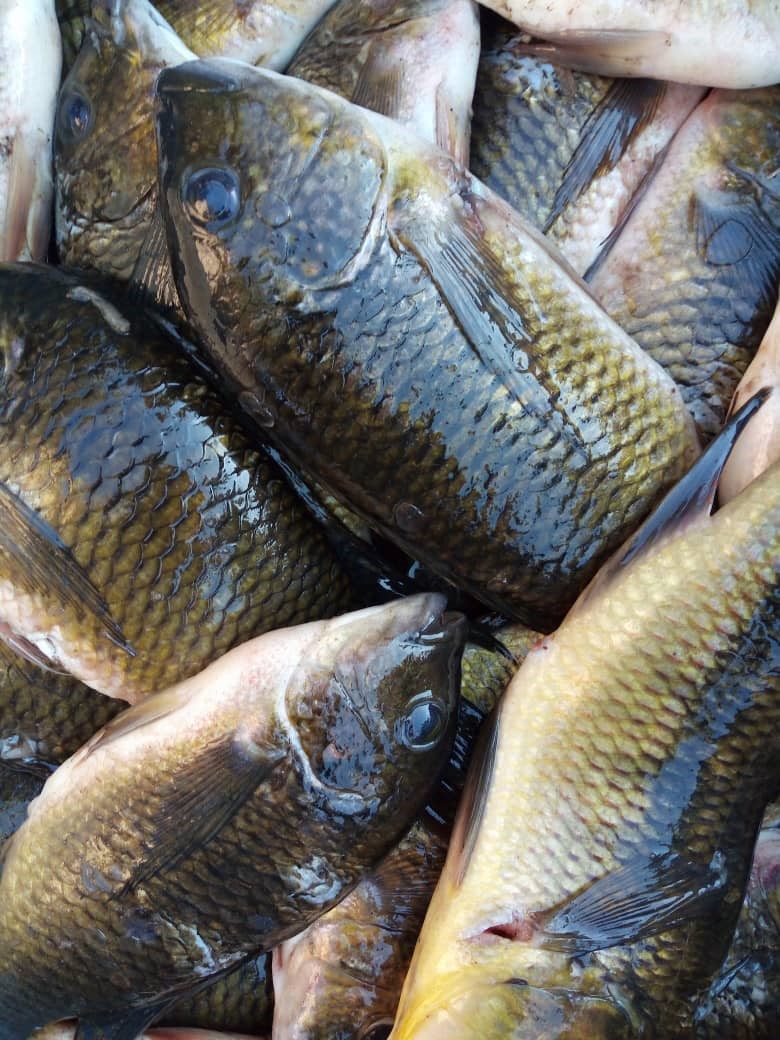COMMERCIAL FISHING METHOD NUMBER 5 - FISH WEIRS (AMAAMBA)
Away from nets, another known and popular mass-fishing method
has been in use around Bangweulu swamps for a very long time. Fish weirs; which
are basically barricades.
Construction of fish weirs, locally termed ‘Ukucilika
amaamba,” (ukucilika simply meaning barricading) is another ancient
commercial and reliable fishing method used by many fishermen.
Fishers who use
this method may not use other fishing gear such as seine or gill nets but rely
heavily on their amaamba to catch as much fish as they need for their
livelihood. In other words, they specialize in this form of fishing.
Though the
method is not unique to Bangweulu, as it is used in many other countries such as
India, it's the kind of ensnaring used that is different.
Usually, here, this
method is used when water floods during the rainy season and later when it
recedes after spawning period.
You may find fish weirs in deep waters while others are
constructed in shallow waters such as in the floodplains. As we will see, those
constructed in deeper waters are different from those in the plains in that the
former may be constructed using reed mats, Isando, across a channel or a
stream and done within the water while the latter may be constructed using turfs across a large plain and is done during the
dry season. Isando is more common around Lunga because of deeper waters
in the swamps while the other type is used as you go up the flood plains of
Chiefs Chiunda Ponde and other areas such as Kabinga and Kafinda chiefdoms.
Those that are constructed in beels, ponds with static water,
after floods where simple traps, fisepa, are set, are used to catch
small fishes for home consumption only and are mainly used by the Bisa in the
east.
Carl Hurchzemeyer, once
a Fisheries Officer and Researcher based at Chikuni, ably describes the
construction of an ordinary fish weir as follows:
“The typical fish weir is a low levee (bank) made of
turfs cut from the surrounding grassy topsoil. The turf is used because the
grass roots hold it together, and because the soil below 20cm depth has an
increasing clay fraction that makes construction harder. Also, grass and
vegetation regrow rapidly over the turfs, which allows a weir to withstand
considerable flow going through the weir. The turfs are gathered from 1 to 2
metres on either side of the weir, and are packed up to a height of 0.7 to 1.5
metres depending on the water depth. The base of the weir is usually about 1
metre wide.
“Once the weir has been used for a season, it reduces
considerably as the turfs compact, and maintenance in subsequent years mostly
involves patching areas that have subsided below the water level. Weirs are
constructed and maintained as soon as water levels have receded enough for the
surrounding ground to become firm but not hard, usually from July to October.
“Various innovations
such as reed mat and grain bag barriers have been observed which block fish
from passing, but allow boats to pass over. When water levels are reduced, some
of the channels running through thicker vegetation become shallow enough to be
blocked off with weirs constructed of vegetation, usually muddy peat,
roots and grasses supported by reed stakes.”
Whether the weir is made of reed mat or turf, the common
feature is always the opening deliberately left for water to flow freely,
thereby allowing fish to swim along into the set, usually camouflaged trap, moono.
A weir can have several openings, mfubo,
where traps are set depending on how long it is.
The myono, for plural, or moono is a
woven long tubular reed basket (60cm - 70cm) with a no-return valve that allows
fish to enter but never to come out. It is wide at the mouth and narrow at the
end which is always tightly tied. It is mostly woven using sedge, ntindi,
or bark fibre.
Two or three hoops
from bendable trees are placed one at the mouth, another in the middle and the
smaller one by the narrow end of the trap to give it a suitable circular shape
that can sit in water. The valve is usually open on top but its end inside the
trap is jammed in such away as not to allow anything trapped in to get out,
until the fisherman unties the end of the trap.
But before actual fishing begins, Carl explains something
notable about the weirs’ fishing period:
“Fish weirs are left open for water and fish to pass through
when the floodplains begin to fill at the start of the rains from December to
February. It is recognised by fishers that this is an important time for fish
spawning, and that juvenile fish need access to the shallow flooded areas to
feed and grow. Also, the fish weirs cannot yet be ‘closed’ at peak flows at the
end of the rains, from February to the beginning of March, or they would risk
their weirs breaching. However, as soon as the first indications of reduced
flows are detected, the fish weirs are ‘closed’ and fishing commences.
“Once the correct
weather factors have signaled the true end of the rains, fish begin to move en
masse. These environmental triggers consist of a steady, strong wind from the
south-east, low cloud cover and an accelerated drop in water levels, and is
called pumbwe. “
Fish caught by weirs may include varieties such as catfish,
cichlid species, mintesa and many more. No wonder fish weirs are a preferred
commercial fishing method by many. You may be interested to know that snakes
and other dangerous reptiles are sometimes trapped too.
Depending on the quantity of fish, the traps can be checked
once a day, after a day or more than once in a day.
As can be seen, the skills needed to run fish weirs are
different from those needed in Mukombo, Malalikisha, Kusebesha and seine
netting discussed earlier. However, many fishermen in Bangweulu swamps are able
to use almost all these methods with ease.
Enough with commercial fishing methods, we will later talk
about common but equally interesting methods used to catch fish for home
consumption.
Remember to subscribe to receive these posts into your mail
box. I will appreciate your comments too.
 SoundCloud
SoundCloud





Comments